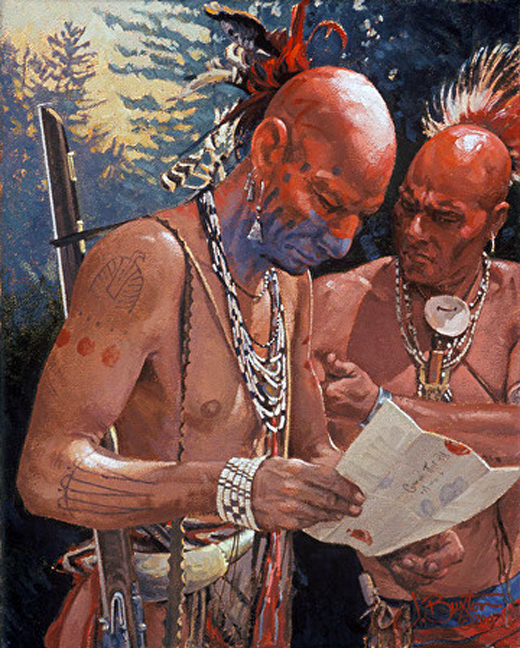 Before, during and after the American Revolution, newspapers from Great Britain were widely consumed on American soil as part of the regular packet ship deliveries of mail and papers. Arguably the most important source of news to the elite readers on both sides of the Atlantic was the London Gazette as it was the official mouthpiece of the Crown and had been since it’s first issue in 1665. The Gazette is well referenced in history books and is often noteworthy for the news it didn’t publish as well as what it did. For instance, it was the first European publication to break news of America’s independence (August 10, 1776), yet it failed to ever publish the text of the Declaration of Independence. In 1781, the Gazette was likely the first in Britain to publish General Cornwallis’s “I have the Mortification” Yorktown surrender letter along with the full articles of capitulation. Commentary and analysis of the official news was often left for the other British papers like the London Chronicle and Edinburgh Advertiser.
Before, during and after the American Revolution, newspapers from Great Britain were widely consumed on American soil as part of the regular packet ship deliveries of mail and papers. Arguably the most important source of news to the elite readers on both sides of the Atlantic was the London Gazette as it was the official mouthpiece of the Crown and had been since it’s first issue in 1665. The Gazette is well referenced in history books and is often noteworthy for the news it didn’t publish as well as what it did. For instance, it was the first European publication to break news of America’s independence (August 10, 1776), yet it failed to ever publish the text of the Declaration of Independence. In 1781, the Gazette was likely the first in Britain to publish General Cornwallis’s “I have the Mortification” Yorktown surrender letter along with the full articles of capitulation. Commentary and analysis of the official news was often left for the other British papers like the London Chronicle and Edinburgh Advertiser.
Perhaps most exciting about the London Gazette to modern-day scholars is that it is entirely archived and searchable online. Before digging into the database, here is some more background on the history and journalistic importance of the Gazette.
 The London Gazette is considered by many historians to be the first English newspaper because it is the first to feature two columns of text (like a Bible) printed on a single sheet of paper, which is a stark contrast to its pamphlet-like newsbook predecessors. It was first published in 1665 in Oxford as the, you guessed it, Oxford Gazette when King Charles II had moved his Royal Court sixty miles northwest of London to avoid the plague. Moving back to London after the first 23 issues, the twice-weekly newspaper was renamed the London Gazette and continued to serve as the primary news organ for Great Britain and its colonies.
The London Gazette is considered by many historians to be the first English newspaper because it is the first to feature two columns of text (like a Bible) printed on a single sheet of paper, which is a stark contrast to its pamphlet-like newsbook predecessors. It was first published in 1665 in Oxford as the, you guessed it, Oxford Gazette when King Charles II had moved his Royal Court sixty miles northwest of London to avoid the plague. Moving back to London after the first 23 issues, the twice-weekly newspaper was renamed the London Gazette and continued to serve as the primary news organ for Great Britain and its colonies.
The London Gazette demonstrated major influence on many publishers near and far in the late 17th and 18th centuries. Single-sheets newspapers with text-divided columns became the next big thing in journalism when the Licensing of the Press Act lapsed between 1679 and 1685, and again in 1695. During that time, the London Gazette lost its monopoly on printed news and many successful titles began publishing like Domestick Intelligence (1679), the Observator (1681), the Post-Boy (1695), and Post-Man (1695). The trend-setting Gazette also played a critical role in feeding American colonists’ appetite for news. Copies of the Gazette were shipped across the Atlantic Ocean to provide former English and European residents in the New World with reports from their homelands. A thriving transatlantic readership and a prevailing hunger for news from the mother country are, in part, the reasons why we didn’t see the first successful American newspaper–the Boston News-Letter–until 1704.
 The Boston News-Letter, which also closely resembled the London Gazette, remained the only newspaper in North America for 15 years until two other newspapers began publishing in December of 1719–the Boston Gazette and the American Weekly Mercury, the latter being printed in Philadelphia and claiming the title of first newspaper printed in the middle colonies. From 1665 until American newspapers flourished in the mid-18th century, the London Gazette was presumably the most well-read newspaper in America.
The Boston News-Letter, which also closely resembled the London Gazette, remained the only newspaper in North America for 15 years until two other newspapers began publishing in December of 1719–the Boston Gazette and the American Weekly Mercury, the latter being printed in Philadelphia and claiming the title of first newspaper printed in the middle colonies. From 1665 until American newspapers flourished in the mid-18th century, the London Gazette was presumably the most well-read newspaper in America.
By the mid-18th century, more than a dozen newspapers were being published on American soil where the first spike in domestic journalism was realized during the French and Indian War, and was sustained by a dramatic increase in American newspaper demand as colonial resistance to power and taxation escalated into rebellion and printers began reporting the revolution.








4 Comments
Another great article. I’m curious how much influence the London Gazette had on the general colonial population after 1770? Did its editorials slow or increase Tory support or did it have much influence at all? In addition to news and editorials, was it advertiser-supported? After the War, how rapidly did its influence wane? A great article like this one always provokes further reading as this one will surely do.
Is there a way to gauge the magnitude of the non-loyalist readership of the London Gazette during the Rev War? Would it have been readily available in taverns located in non-loyalist areas for example? The old newspapers are fascinating – thanks for the articles on them.
Thank you for the article and research link, Todd! That’s a huge help to researchers delving into the other side of the story, on the other side of the pond. I also like the additional search tool the London Gazette website offers for showing issues of historical interest. I’ve already read the clip about highwayman Dick Turpin on the 22 Feb. 1734 issue. Thank you again!
Thanks for the compliments. You all raise good questions that I’m unable to answer with great detail, but I recall reading somewhere that the London Gazette had a circulation of approximately 2500 during the war, which was consistent with most of the other London newspapers at the time. Since only a fraction of those made it to America, the readership was mostly gained through its news being extracted and recirculated in American newspapers as well as other London newspapers that cited the Gazette for official government news. For instance, some of the London Chronicles featured in Reporting the Revolutionary War include reference to the Gazette as the origin for their reports. As for its post-1770 influence, this isn’t all that scientific, but I found 70 references to the “London Gazette” within Founders Online at http://founders.archives.gov/. All but six of those are after 1770. And 31 are post-war.